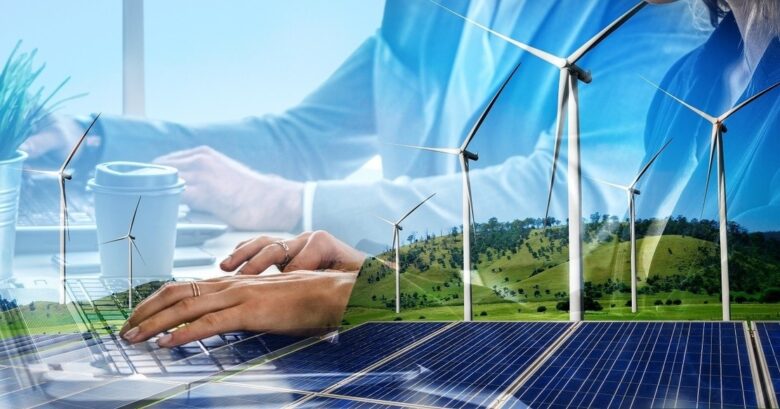The world is rapidly transitioning to cleaner, more sustainable energy as we meet growing global energy demand and protect the environment. New ideas for renewable energy technologies are transforming how communities generate, store, and use electricity. These advancements are making clean energy more affordable, accessible, and efficient than ever. Thanks to ongoing research and increasing funding, the renewable energy sector is constantly generating new ideas. These new ideas promise not only a better planet but also more jobs and greater energy independence. As the world transitions to smarter, cleaner systems, renewable energy is becoming an integral part of the future. The following sections discuss some of the most important new ideas that are changing our path to a cleaner future.
Solar Power for the Next Generation:
Thanks to exciting new ideas, solar technology has made significant advances, moving beyond traditional solar panels. Modern solar technology focuses on capturing more sunlight, generating more electricity, and easily adapting to different environments. New technologies like bifacial solar panels, thin-film batteries, and perovskite solar materials are changing our understanding of maximum efficiency. These new technologies not only generate more electricity but can also be installed in various locations, such as on roofs, facades, and even portable devices.
Floating solar power plants on lakes and reservoirs are growing in popularity. They not only generate clean electricity but also prevent water evaporation. Solar panels are better suited for long-term use because they are more resistant to extreme weather conditions. Thanks to advances in energy storage technology, homes and businesses can continue using energy even after sunset. As new technologies develop, solar energy will play an increasingly important role in the global transition to clean energy.
Revolutionary Wind Energy Developments:
New turbine designs, smarter control systems, and offshore wind technology are propelling wind energy into a new era. Today’s turbines are taller, more powerful, and have larger blades, allowing them to capture wind even at lower wind speeds. The result means more areas can utilize wind energy, making it accessible to more people. Offshore wind farms built in the more stable deep sea are becoming a major source of renewable energy.
Among the most promising new technologies are floating wind turbines, as they can operate in areas beyond the reach of conventional seabed installations. Thanks to more advanced sensors and computer monitoring systems, turbines can better adapt to changing weather conditions. This improves their efficiency and reduces maintenance requirements. These improvements make wind energy more reliable, economical, and flexible, making it an increasingly important part of the global clean energy future.
New Developments in Energy Storage Systems:
Energy storage technology is developing rapidly and offers a solution to a key challenge for renewable energy: how to store electricity for future use. New battery systems, such as solid-state and lithium-sulfur batteries, offer greater capacity, longer lifespans, and faster charging. These new concepts ensure an uninterrupted power supply, even in calm or sunless conditions. Large-scale energy storage facilities help communities and businesses by ensuring sufficient energy during peak demand periods and emergencies.
In addition to batteries, thermal energy storage, hydrogen systems, and compressed air technology are gaining popularity due to their adaptability. These solutions improve grid stability, reduce our dependence on fossil fuels, and increase the overall resilience of renewable energy grids. Thanks to ongoing research, energy storage technology is expected to evolve significantly, ensuring a reliable supply of renewable energy in the future.
New Ideas in Ocean and Hydropower:
Hydropower remains one of the most reliable sources of renewable energy, and new technologies are making it more flexible and sustainable. Small-scale hydropower solutions are becoming increasingly popular as green alternatives to traditional dams. These technologies generate electricity with minimal environmental impact. Ocean energy, such as wave and tidal power, is attracting widespread attention from researchers due to its enormous untapped potential. Tidal turbines utilize easily predictable ocean currents to generate electricity stably and reliably.
Wave energy systems, designed to absorb the ocean’s natural movements, are being tested worldwide. These new technologies enable people living near waterways to access clean and reliable electricity while reducing the burden on traditional energy systems. As hydropower and ocean energy systems continue to improve in terms of corrosion resistance and ease of installation, their efficiency and longevity also increase.
A Look at the Future of Renewable Energy:
The future of renewable energy looks bright. New ideas are constantly pushing the boundaries, making systems smarter and more interconnected. The importance of artificial intelligence (AI) is becoming increasingly clear, as it enables the efficiency of energy production, the prediction of energy demand, and the more accurate management of distribution networks. Microgrids and smart grids enable communities to generate and share renewable energy close to their homes. This provides them greater autonomy and improves their ability to withstand power outages.
Industries that cannot easily switch to electricity are beginning to turn to sustainable fuels from biomass or carbon capture. As the cost of renewable energy technologies decreases, poorer countries have more opportunities to use clean energy and improve their infrastructure. Continued investment in research means that renewable energy will continue to develop, leading us toward a future based on sustainable development and innovation. Each discovery brings the world one step closer to cleaner, safer, and more reliable energy.
Conclusion:
Innovation in the renewable energy sector is changing how the world accesses energy and laying the foundation for a sustainable and robust future. These advancements make renewable energy more efficient, more accessible, and more suitable for diverse industries and environments. From the discovery of solar energy to new ocean technologies, each new technology contributes to reducing emissions, improving energy security, and supporting long-term economic growth.
The pace of development will accelerate as countries, businesses, and communities invest in renewable energy solutions. The transition to clean energy is not just a trend but a crucial step, as we need a healthier world and smarter technologies. With continued global research and collaboration, renewable energy will change the future in significant ways. The journey ahead promises more discoveries that will make our planet a cleaner home.
FAQs:
1. What are the most exciting new ideas in renewable energy right now?
The most promising developments are considered improvements in next-generation solar materials and offshore wind technologies. This is because these are becoming increasingly efficient and can be applied globally.
2. How does energy storage help renewable energy systems?
Energy storage ensures a constant electricity supply by storing excess energy and releasing it when production is low. This makes the grid more reliable and stable.
3. Are renewable energy systems affordable enough for homes?
New technologies are lowering the installation and maintenance expenses of renewable energy systems, making them more accessible for homes and small businesses.
4. Which renewable energy source is the most reliable?
Hydropower and tidal power are highly reliable because the water flow is predictable. However, their availability depends on where you live.
5. What does the future of renewable energy look like?
It will contribute to economic growth, reduce environmental impact, improve the reliability of the energy supply, and help the world achieve its sustainable development goals.




